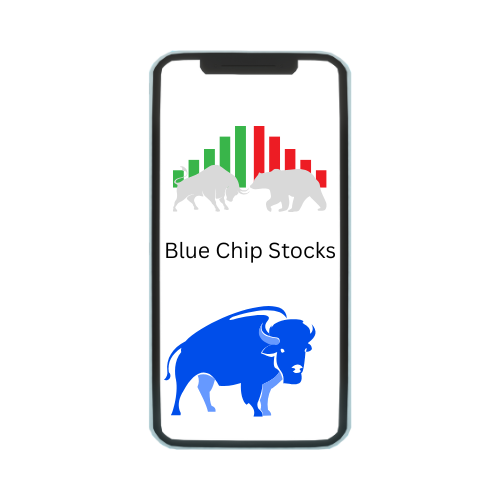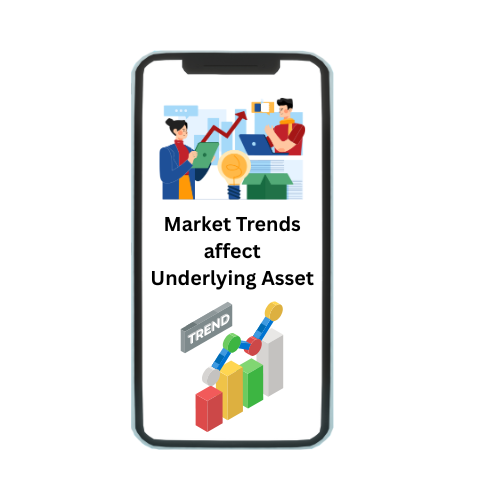The Dividend Payout Ratio is a financial metric that shows the proportion of earnings a company pays to its shareholders in the form of dividends. It is an important measure to understand how much of the earnings are being returned to shareholders versus being retained for growth and other purposes.
Calculation of Dividend Payout Ratio
The Dividend Payout Ratio can be calculated using the following formula:
Dividend Payout Ratio= (Total Dividends Paid/Net Income) ×100
Alternatively, it can be calculated on a per-share basis:
Dividend Payout Ratio= (Dividend per Share (DPS)/Earnings per Share (EPS)) ×100
Example Calculation
Let’s consider a company with the following financials for a given year:
- Total Dividends Paid: ₹20,00,000
- Net Income: ₹50,00,000
- Dividend Per Share (DPS): ₹5
- Earnings Per Share (EPS): ₹10
Using the first formula:
- Dividend Payout Ratio=(₹20,00,000/₹50,00,000)×100=40%
Using the second formula:
Dividend Payout Ratio=(₹5/₹10)×100=50%
Significance of Dividend Payout Ratio
- Investor Insights:
- Income Investors: Prefer companies with a high and stable Dividend Payout Ratio, indicating reliable income.
- Growth Investors: Might favour companies with a low Dividend Payout Ratio, implying potential for capital appreciation.
- Financial Health:
- Sustainability: A sustainable Dividend Payout Ratio suggests that the company is in a good financial position and can continue to pay dividends without compromising its growth or stability.
- Risk Assessment: A very high ratio can indicate risk if the company faces a downturn in earnings.
- Company Strategy:
- Dividend Policy: Reflects the company’s dividend policy and its approach to balancing shareholder returns and business reinvestment.
- Lifecycle Stage: Indicates the company’s stage in its lifecycle (e.g., mature companies vs. growth companies).
Interpretation of Dividend Payout Ratio
The Dividend Payout Ratio provides insights into a company’s dividend policy and financial health:
- High Dividend Payout Ratio:
- Indicates a company is returning a large portion of its earnings to shareholders.
- Common in mature, stable companies with less need for reinvestment.
- Could be a warning sign if unsustainably high, indicating the company might not be retaining enough earnings to support future growth or cover unexpected expenses.
- Low Dividend Payout Ratio:
- Suggests the company is retaining a significant portion of its earnings for reinvestment in growth, research and development, debt reduction, or other purposes.
- Typical of high-growth companies needing capital for expansion.
- Could signal a conservative approach to dividend payments, ensuring financial stability.
- Moderate Dividend Payout Ratio:
- Balances returning earnings to shareholders and retaining earnings for growth and other needs.
- Often seen as a sign of a well-managed company with a balanced approach to growth and shareholder returns.
Factors Affecting Dividend Payout Ratio
Several factors influence a company’s Dividend Payout Ratio, reflecting its financial policies, strategic goals, and operational circumstances. Understanding these factors can help investors assess the sustainability and implications of the company’s dividend payments. Here are key factors affecting the Dividend Payout Ratio:
- Profitability
- Net Earnings: Higher profitability allows for a higher payout ratio, as the company has more earnings to distribute.
- Earnings Volatility: Companies with stable earnings are more likely to maintain a consistent payout ratio, while those with volatile earnings might vary their payout ratio to manage financial stability.
- Cash Flow
- Operational Cash Flow: Adequate cash flow from operations ensures that the company can pay dividends without impacting its operational needs.
- Free Cash Flow: Companies with strong free cash flow (cash from operations minus capital expenditures) are better positioned to pay dividends.
- Growth Opportunities
- Reinvestment Needs: Companies with significant growth opportunities might retain more earnings to fund expansion, research and development, or acquisitions, resulting in a lower payout ratio.
- Stage of Business Lifecycle: Mature companies with fewer growth opportunities often have higher payout ratios, while younger, high-growth companies might retain more earnings.
- Debt Levels and Financial Leverage
- Debt Obligations: High levels of debt and interest obligations might lead a company to retain more earnings to service debt, reducing the payout ratio.
- Leverage Strategy: Companies with conservative financial strategies might maintain lower payout ratios to ensure they can manage debt obligations comfortably.
- Capital Expenditure Requirements
- Infrastructure Investments: Companies needing significant capital expenditures for maintenance or expansion might retain more earnings, resulting in a lower payout ratio.
- Long-term Projects: Investment in long-term projects often requires substantial retained earnings, affecting the payout ratio.
- Economic Conditions
- Economic Stability: During economic downturns, companies might reduce their payout ratios to conserve cash.
- Inflation and Interest Rates: High inflation and interest rates can impact a company’s earnings and cash flow, influencing its ability to maintain a high payout ratio.
- Regulatory Environment
- Tax Policies: Changes in tax laws affecting dividends can influence the payout ratio. Favorable tax treatment for dividends might encourage higher payout ratios.
- Legal Requirements: Regulatory constraints can impact the ability of a company to pay dividends.
- Management and Corporate Governance
- Management’s Strategy: Management’s outlook on future earnings and strategic goals influence the payout ratio. A focus on growth might lead to lower payouts, while a focus on shareholder returns might increase them.
- Governance Practices: Strong corporate governance can lead to transparent and consistent dividend policies, affecting the payout ratio.
- Shareholder Expectations
- Investor Demographics: Companies with a large base of income-focused investors might maintain higher payout ratios to meet shareholder expectations.
- Market Expectations: Meeting or exceeding market expectations regarding dividends can positively impact stock prices and investor sentiment.
- Historical Dividend Policy
- Track Record: Companies with a long history of paying dividends might maintain a stable or increasing payout ratio to uphold their reputation.
- Dividend Culture: Cultural and historical factors within the company and its industry can influence dividend policies and payout ratios.
Limitations of Dividend Payout Ratio
While the Dividend Payout Ratio is a useful metric for assessing a company’s dividend policy, it has several limitations. Understanding these limitations is crucial for making informed investment decisions. Here are the key limitations of the Dividend Payout Ratio:
- Does Not Account for Cash Flow
- Cash vs. Earnings: The Dividend Payout Ratio is based on net earnings, not cash flow. A company might have high earnings but insufficient cash flow to pay dividends, making the ratio misleading.
- Non-Cash Items: Net income includes non-cash items such as depreciation and amortization, which do not affect cash flow but can distort the payout ratio.
- Ignores Growth Opportunities
- Reinvestment Needs: The ratio does not consider the company’s need to reinvest earnings for growth. A low payout ratio might indicate a company is retaining earnings for profitable investments, which can be a positive sign.
- Stage of Lifecycle: High-growth companies often have low or no payout ratios as they reinvest earnings, but this does not necessarily indicate poor performance.
- Does Not Reflect Debt Levels
- Financial Leverage: The ratio does not consider the company’s debt obligations. A high payout ratio might be risky if the company has significant debt to service.
- Debt vs. Equity Financing: Companies with higher leverage might maintain a lower payout ratio to preserve cash for debt repayment, which the ratio alone does not reveal.
- Market Conditions and Economic Cycles
- Economic Downturns: During economic downturns, companies might reduce dividends to conserve cash, resulting in a lower payout ratio that does not necessarily reflect poor management or performance.
- Cyclical Industries: Companies in cyclical industries may experience fluctuating earnings, affecting the payout ratio without indicating long-term issues.
- Management Decisions
- Earnings Manipulation: Management might manipulate earnings to maintain a desired payout ratio, which can mislead investors about the company’s true financial health.
- Policy Changes: Sudden changes in dividend policy can affect the payout ratio, making historical comparisons difficult.
- One-Dimensional View
- Total Returns: The ratio focuses only on dividends and ignores capital gains, which are a significant part of total returns for investors.
- Non-Dividend Factors: The ratio does not account for other factors affecting investor returns, such as share buybacks, which can also return value to shareholders.
- Short-Term Focus
- Quarterly Fluctuations: The ratio can vary significantly from quarter to quarter due to seasonal earnings variations, making short-term changes potentially misleading.
- Long-Term Viability: A high payout ratio might be sustainable in the short term but could jeopardize long-term viability if not managed properly.
- Industry Variations
- Industry Norms: Different industries have varying norms for payout ratios. Comparing companies across different industries using this ratio can be misleading.
- Business Models: Business models that require heavy reinvestment (like technology or biotech firms) typically have lower payout ratios compared to utilities or consumer goods companies.
- Inflation and Currency Fluctuations
- Purchasing Power: The ratio does not consider the impact of inflation on purchasing power. Even if the payout ratio remains stable, inflation can erode the real value of dividends.
- Foreign Exchange: For multinational companies, currency fluctuations can affect earnings and dividends, impacting the payout ratio without reflecting underlying business performance.
Strategies for Managing Dividend Payout Ratio
Managing a dividend payout ratio effectively is crucial for balancing shareholder expectations and maintaining a company’s financial health. Here are several strategies companies can employ:
- Balancing Reinvestment and Payouts
- Reinvestment for Growth: Allocate a portion of earnings to reinvest in the business to fund future growth and innovation.
- Payout Stability: Aim for a consistent dividend payout ratio that aligns with long-term profitability and growth prospects.
- Earnings Stability
- Build Reserves: Maintain a reserve fund from profitable years to cover dividends during less profitable periods.
- Diversified Revenue Streams: Develop multiple revenue streams to reduce dependency on any single source of income, ensuring more stable earnings.
- Flexible Dividend Policies
- Fixed and Variable Dividends: Implement a policy with a fixed base dividend supplemented by variable dividends linked to performance.
- Dividend Reinvestment Plans (DRIPs): Offer shareholders the option to reinvest dividends into additional shares, conserving cash flow while rewarding investors.
- Communication with Shareholders
- Transparency: Clearly communicate the rationale behind dividend decisions and any changes in payout policies.
- Education: Educate shareholders about the company’s long-term strategy and how dividend policies support this.
- Monitoring Financial Health
- Leverage Ratios: Regularly monitor debt levels and leverage ratios to ensure dividends do not compromise financial stability.
- Cash Flow Management: Ensure robust cash flow management practices to maintain liquidity for dividend payments.
- Strategic Use of Buybacks
- Share Buybacks: Consider share repurchase programs as an alternative to dividends, providing flexibility and tax advantages to shareholders.
- Adapting to Economic Conditions
- Cyclical Adjustments: Adjust the payout ratio based on economic conditions and business cycles to maintain sustainability.
- Contingency Plans: Develop contingency plans for economic downturns to sustain dividend payments without over-leveraging.
- Performance-Based Metrics
- Earnings Growth Correlation: Link dividends to performance metrics like earnings growth, ensuring payouts reflect the company’s financial health.
- Payout Ratio Targets: Set and periodically review payout ratio targets aligned with industry standards and company goals.
- Regulatory and Tax Considerations
- Compliance: Ensure compliance with regulatory requirements regarding dividend payments.
- Tax Efficiency: Structure dividend policies to optimize tax implications for both the company and shareholders.
- Long-Term Sustainability Focus
- Environmental, Social, and Governance (ESG) Considerations: Integrate ESG factors into financial decision-making, including dividend policies, to appeal to socially conscious investors.
By employing these strategies, companies can effectively manage their dividend payout ratio, balancing the need to reward shareholders with the necessity of maintaining financial health and supporting future growth.
Conclusion
The dividend payout ratio is a financial metric that indicates the proportion of a company’s earnings that are distributed to shareholders in the form of dividends. It is an essential measure for both investors and the company’s management, as it reflects the company’s dividend policy and its ability to sustain dividend payments over time.





